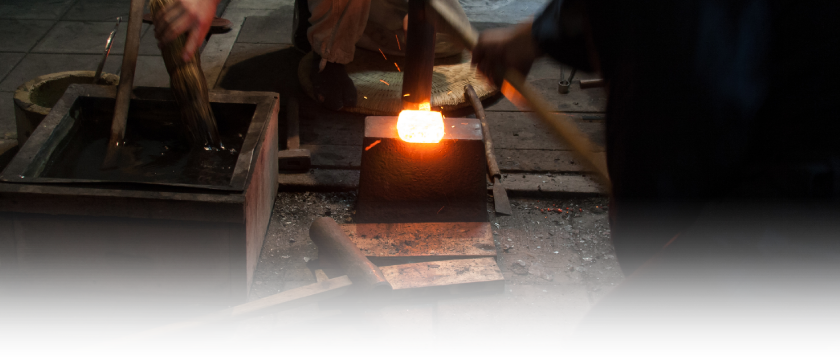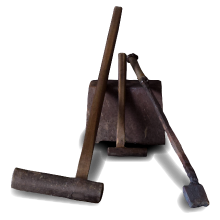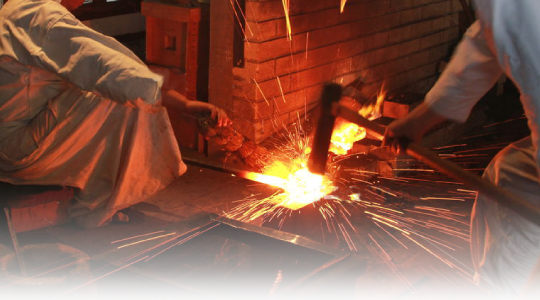-
For many people, the first thing that comes to mind when tatara iron is mentioned is the katana, or nihontō.
Since the end of the Kofun period (c. 200–600 CE), nihontō were continuously redesigned to fit the period in which they appeared. Knowledge and techniques obtained through unending trial and error drew out the full capabilities of steel, and nihontō exhibit lethal practicality as well as unique beauty.
Although no longer used as weapons, one reason nihontō continue to captivate us today is that they embody the spirit of Japanese workmanship.
High-quality metal is essential for making a nihontō. Such metal is produced in the Izumo region using tatara and shipped all over the country. Here, we will explain about nihontō as they relate to tatara ironworks.
-
The highest quality steel made using tatara is called tamahagane. Tamahagane is essential to making a nihontō.
Using tamahagane made by the murage, a skilled swordsmith pours his body and spirit into forging and quenching a one-of-a-kind nihontō.
-
There are many things about nihontō production that are already lost to time. They are considered the pinnacle of traditional craftsmanship that cannot be imitated using modern methods, which is another reason why tamahagane is indispensable as an ingredient.
Nittōho Tatara in Okuizumo is the only place left in Japan that makes tamahagane the traditional way. The resulting steel is sent around the country for swordsmiths to create nihontō.
*Tamahagane was not only used in sword production. In fact, the term was created in the Meiji era (1868–1912) and comes from the Japanese word for “cannonball” (tama). Naturally, swords had been produced with tatara iron since long before the term was invented.
-
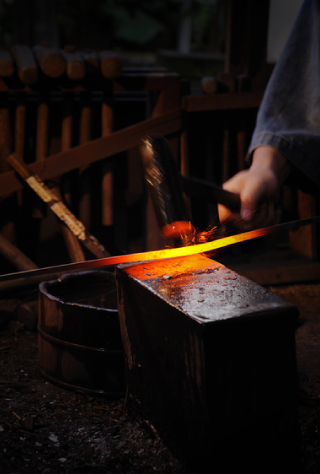
-
The material used for the blade of a katana is called kawagane, or “skin steel.” It is folded 15 times during forging to create 30,000 layers that make the blade both hard and springy and produces a beautiful grain.
-
Forging Process
-
① Subeshi/Kowari
Heated tamahagane is pounded thin with a hammer and broken into pieces.
-
② Shitagitae
Pieces are arranged and heated, pounded thin, then folded for another round. This is repeated 12 to 15 times.
-
③ Agekitae
Finished steel is again cut into pieces and rearranged for another heating. The grain will differ depending on the arrangement of the steel pieces.
-
-
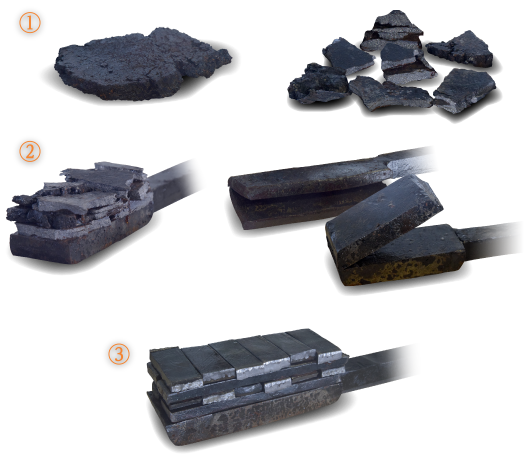
-

-
Today, you won’t see nihontō used as weapons, but many people enjoy them as works of art both privately and in museums.
Each part of the katana has a name. By learning these terms, you can appreciate nihontō even more.
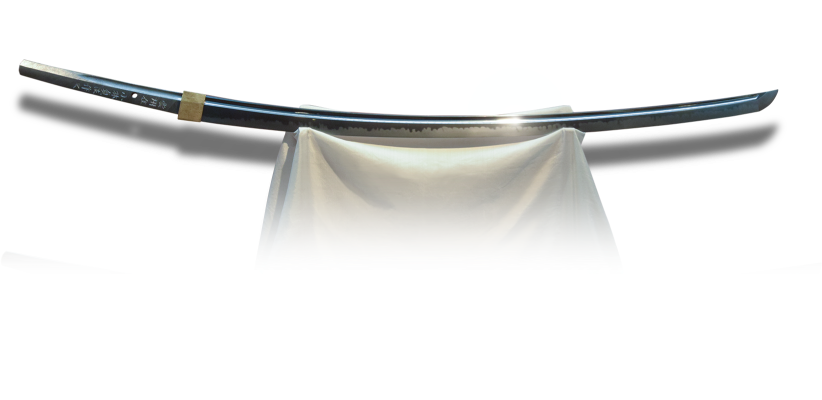
-

-
-
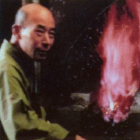
Hirotsugu Kobayashi
Swordsmithing Name: Sadateru -
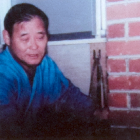
Sadatoshi Kobayashi
Swordsmiting Name: Sadanori -
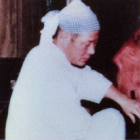
Rikio Kobayashi
Swordsmithing Name: Sadanaga
-





